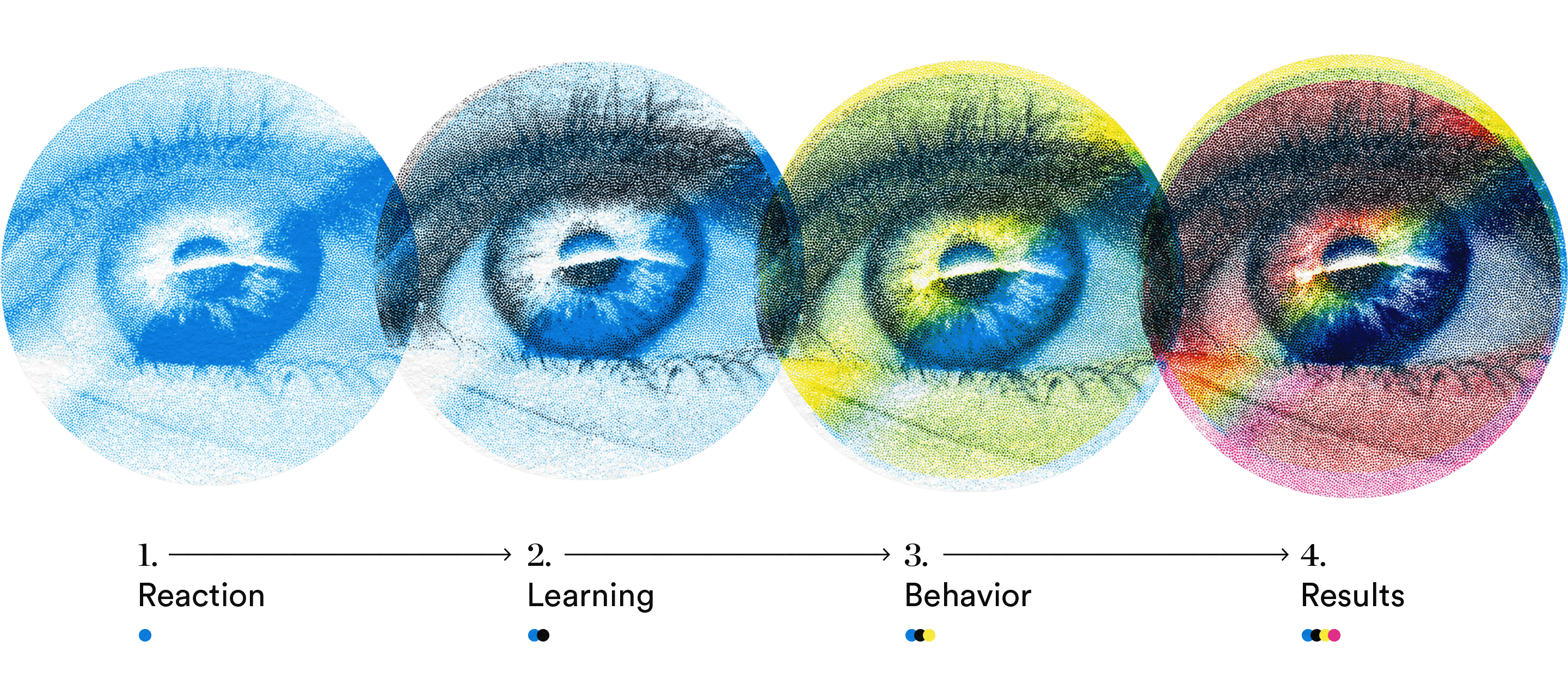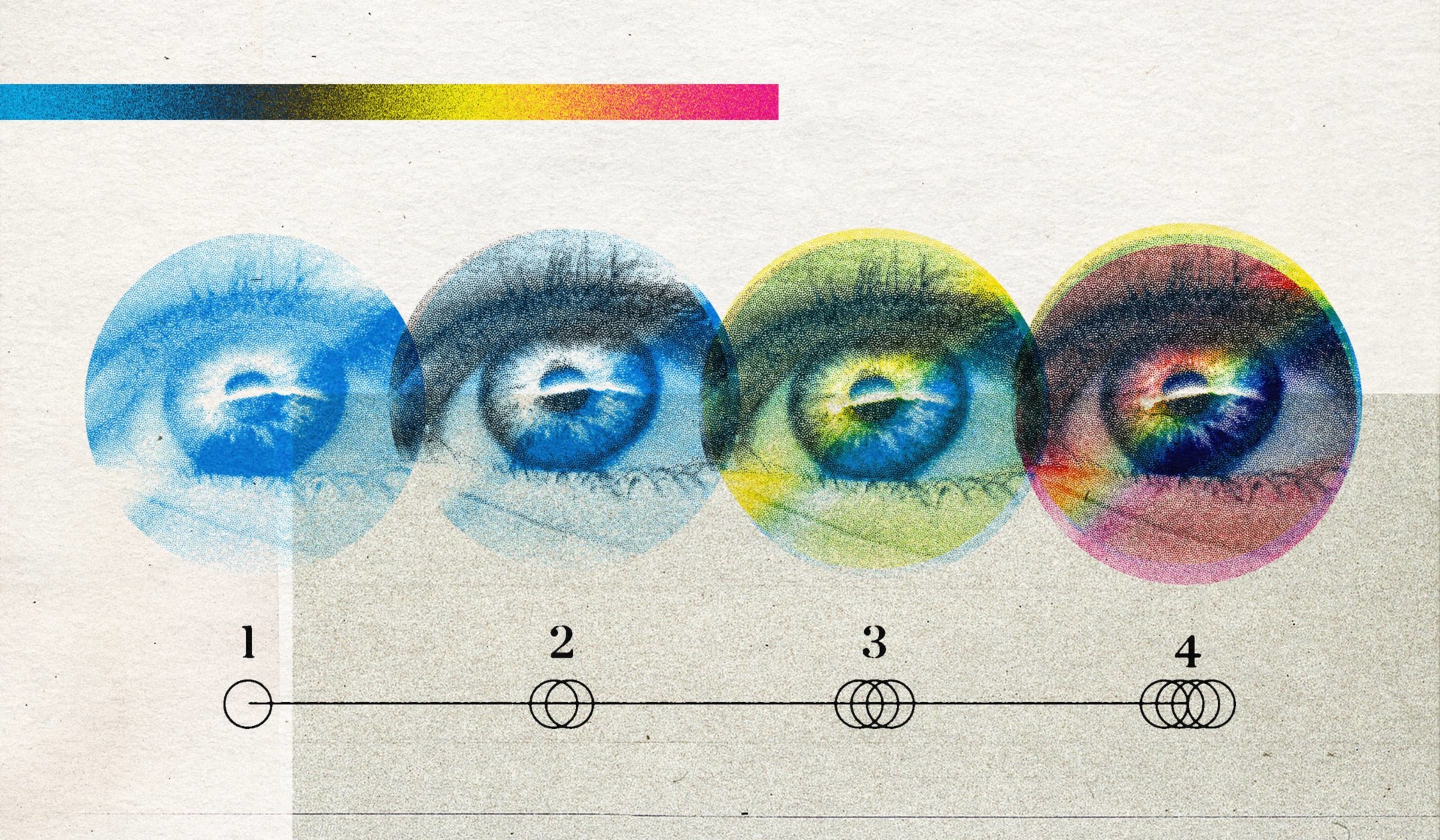At Maestro, we have spent many years with our team and with clients discovering what makes a powerful learning experience, and from that, we’ve built an arsenal of learning philosophies and principles that guide the work we do in learning and development.
One of the models that inform our learning principles is the Kirkpatrick Evaluation Model. Let’s take a look at the Kirkpatrick Model’s four levels of learning evaluation to understand how to measure the success of any training.
The Kirkpatrick Model of training evaluation
In our previous post about Bloom’s Taxonomy, we talked about using that model to frame and plan learning experiences. In contrast, the Kirkpatrick Model of training evaluation is about measuring the outcomes of a learning experience.
While planning and executing learning are obviously important parts of the process, it’s equally important to answer the questions: Did the training do what it was supposed to do? Did the learners learn what they needed to? As a result, is that changing learner behavior? And ultimately, is the behavior change making a difference in business objectives?
In the Kirkpatrick Model, there are multiple levels of evaluating training. Here’s a breakdown of the four levels of learning evaluation in the Kirkpatrick Model and how they work.
Kirkpatrick Model: Four levels of learning evaluation
The model’s four distinct levels that help us measure success in learning experiences are: Reaction, Learning, Behavior, and Results.

1. Reaction
This part of the Kirkpatrick Evaluation Model is fairly simple: it’s user feedback. How did learners react to the experience? What are their initial opinions? Were they positive, negative, or indifferent?
While the answers to this question may not be able to fully answer whether training was successful, they do let us understand the overall impact of the learning experience and whether your learners were engaged. And as it turns out, engagement does have a way of increasing ROI.
How to Measure: Measuring participants’ reactions to training can look a few different ways. You could have learners complete a pre- and post-training survey. You could also ask learners to review the training by giving it a star rating and providing comments. Another idea is to interview learners either individually or in groups following the training.
2. Learning
At the Reaction level, the goal is to understand whether your training was well-received and enjoyed by learners. At the Learning step, you want to know if they actually learned anything. This part of the Kirkpatrick Model isn’t too different from the Remember phase of Bloom’s Taxonomy; we want to understand what was learned and if those concepts and skills are fully comprehended.
How to Measure: Measuring learning using the Kirkpatrick Evaluation Model can be done through quizzes and assessments. Knowledge checks and other post-training tools allow us to understand how well the training taught certain concepts and whether learners are walking away with a stronger knowledge base.
3. Behavior
While the results gathered from the Learning phase are important to understand which concepts and skills were learned in theory, Behavior is answering the question: Did what they learn change their behavior? In terms of how this relates to Bloom’s, it measures higher aspects of learning such as Application, Creation, and Evaluation.
How to Measure: You’re going to need more than quizzes and knowledge checks to evaluate the Behavior level of the Kirkpatrick Model. Try testing behavior change with scenario learning, behavior assessments, or on-the-job observation and feedback. Then, you can see not only what someone learned but also how it’s affecting their job performance.
4. Results
Results is the final stage of Kirkpatrick’s four level training evaluation model, and it’s the most important. What’s measured here is how well the learning met company objectives.
While the other four levels matter—Reaction, Learning, and Behavior—the results are what determines whether the training served its intended purpose or not. Did it improve sales? Did employee satisfaction improve? Are there fewer safety violations? This is why it’s so important to set objectives from the start of planning a learning experience: you want to see results.
How to Measure: Results are done through KPIs and strict measurements. Did ROI increase? What about customer satisfaction? Did workplace incidents go down?
_____
When used successfully, the Kirkpatrick Model can provide the “why” behind your training and give you a way to measure whether or not it was successful—for everyone involved. We hope this intro to the Kirkpatrick Model gives you the tools you need to evaluate your learning and truly understand its impact from multiple viewpoints.
Stay current in the world of learning
We’re talking to learning changemakers, reviewing industry-relevant books, and working to bring you the most up-to-date content possible. Blink and you’ll miss what’s next.
Subscribe now→